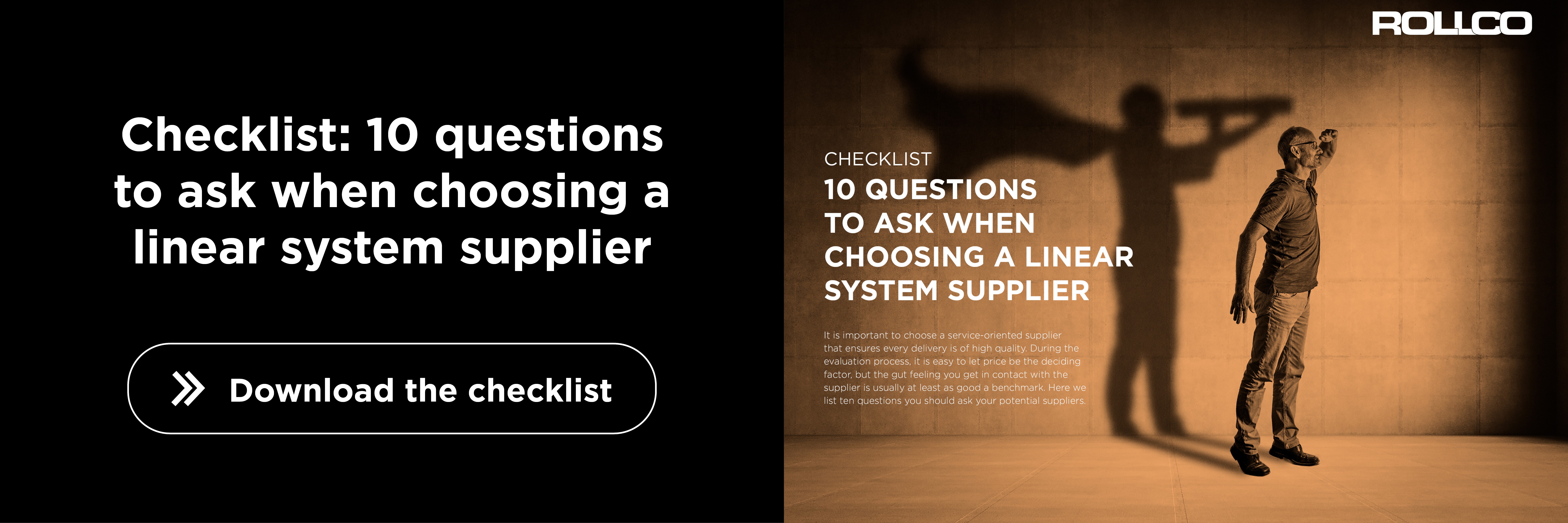
It is not difficult to understand that cheap and best quality rarely go together. The question is, what is a satisfying price in relation to performance? How should you think if you want to create a linear system that is optimal from all aspects?
Linear systems with the right components for the best price and performance
The first step towards optimising price and performance is not to oversize the linear system. Often, components with a capacity that exceeds the requirements are being used, which makes them unnecessarily expensive.
It is often possible to choose components with a lower capacity without jeopardising the function and reliability of the solution itself. Start from what requirements the linear system will place on, for example, speed, frequency, acceleration and load torque. Then choose a component that can meet those exact requirements. There is no need for a rail that can handle a ton if the actual load never exceeds 100 kilos.
Dimension for the requirements, not the visual
Sometimes, purely visually, there may be a desire for the various components to fit together. A large machine, for example, often has large steel beams in its construction. In that situation, it can seem strange to mount a block on a rail that looks as slim as a matchstick. Though, appearances can be deceiving. This rail could, in reality, be able to handle a load of six tonnes.
Understandably, sometimes you want to dimension for the visual. Unfortunately, those cases are often vastly oversized, which does not optimise price in relation to performance.
Think economically at all stages of the construction
Choosing properly dimensioned components is a way to find the optimal balance between price and performance. But it's also necessary to carefully consider the construction itself. Sometimes an alternative solution can make it possible to use a component that meets the requirements at a lower cost.
For example, a telescopic rail can be optimised in some cases. Usually, it only extends in one direction and has a specified stroke length. But if you use a telescopic rail that moves in both directions, you can get by with a shorter total length. It reduces the cost of the component without sacrificing functionality. Of course, such a solution does not always work in practice, but it is an example of how to cut purchase costs with a well-thought-out design.


